Entry Database : PDB / ID : 2lduTitle Solution NMR Structure of Heat shock factor protein 1 DNA binding domain from homo sapiens, Northeast Structural Genomics Consortium Target HR3023C Heat shock factor protein 1 Keywords / / / / / Function / homology Function Domain/homology Component
/ / / / / / / / / / / / / / / / / / / / / / / / / / / / / / / / / / / / / / / / / / / / / / / / / / / / / / / / / / / / / / / / / / / / / / / / / / / / / / / / / / / / / / / / / / / / / / / / / / / / / / / / / / / / / / / / / / / / / / / / / / Biological species Homo sapiens (human)Method / Model details lowest energy, model 1 Authors Liu, G. / Xiao, R. / Ciccosanti, C. / Janjua, H. / Acton, T.B. / Lee, H. / Wang, H.B. / Huang, Y.B. / Everett, J.K. / Montelione, G.T. / Northeast Structural Genomics Consortium (NESG) Journal : To be Published Title : Northeast Structural Genomics Consortium Target HR3023CAuthors : Liu, G. / Xiao, R. / Ciccosanti, C. / Janjua, H. / Acton, T.B. / Wang, H. / Lee, H.B. / Huang, Y.T. / Everett, J.K. / Montelione, G.T. History Deposition Jun 1, 2011 Deposition site / Processing site Revision 1.0 Jul 6, 2011 Provider / Type Revision 1.1 Jul 13, 2011 Group Revision 1.2 Feb 22, 2012 Group Revision 1.3 Jun 14, 2023 Group / Database references / OtherCategory database_2 / pdbx_database_status ... database_2 / pdbx_database_status / pdbx_nmr_software / pdbx_nmr_spectrometer / struct_ref_seq_dif Item _database_2.pdbx_DOI / _database_2.pdbx_database_accession ... _database_2.pdbx_DOI / _database_2.pdbx_database_accession / _pdbx_database_status.status_code_nmr_data / _pdbx_nmr_software.name / _pdbx_nmr_spectrometer.model / _struct_ref_seq_dif.details Revision 1.4 May 15, 2024 Group / Database references / Category / chem_comp_bond / database_2 / Item
Show all Show less
 Yorodumi
Yorodumi Open data
Open data Basic information
Basic information Components
Components Keywords
Keywords Function and homology information
Function and homology information Homo sapiens (human)
Homo sapiens (human) Authors
Authors Citation
Citation Journal: To be Published
Journal: To be Published Structure visualization
Structure visualization Molmil
Molmil Jmol/JSmol
Jmol/JSmol Downloads & links
Downloads & links Download
Download 2ldu.cif.gz
2ldu.cif.gz PDBx/mmCIF format
PDBx/mmCIF format pdb2ldu.ent.gz
pdb2ldu.ent.gz PDB format
PDB format 2ldu.json.gz
2ldu.json.gz PDBx/mmJSON format
PDBx/mmJSON format Other downloads
Other downloads 2ldu_validation.pdf.gz
2ldu_validation.pdf.gz wwPDB validaton report
wwPDB validaton report 2ldu_full_validation.pdf.gz
2ldu_full_validation.pdf.gz 2ldu_validation.xml.gz
2ldu_validation.xml.gz 2ldu_validation.cif.gz
2ldu_validation.cif.gz https://data.pdbj.org/pub/pdb/validation_reports/ld/2ldu
https://data.pdbj.org/pub/pdb/validation_reports/ld/2ldu ftp://data.pdbj.org/pub/pdb/validation_reports/ld/2ldu
ftp://data.pdbj.org/pub/pdb/validation_reports/ld/2ldu Links
Links Assembly
Assembly
 Components
Components Homo sapiens (human) / Gene: HSF1, HSF1_HUMAN, HSTF1 / Production host:
Homo sapiens (human) / Gene: HSF1, HSF1_HUMAN, HSTF1 / Production host: 
 Sample preparation
Sample preparation Processing
Processing Movie
Movie Controller
Controller


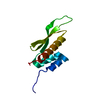
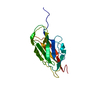

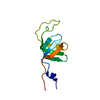
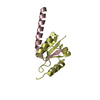
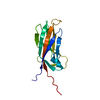

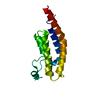


 PDBj
PDBj




 HSQC
HSQC